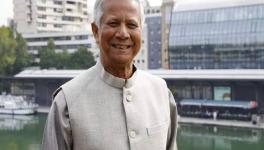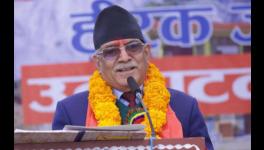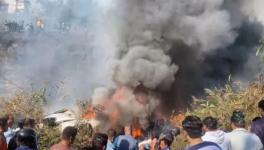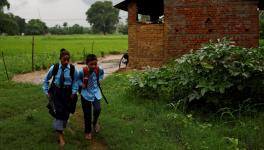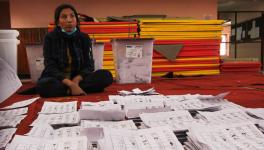Nepal’s Left And Its Challenges
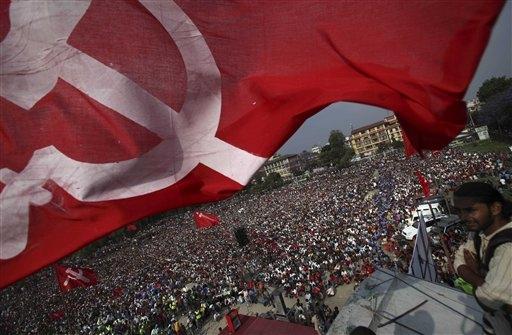
Nepal’s Communist won a major victory in the 2017 Legislative Assembly election. The Communist bloc swept the seats from one end of the country to the other. What allowed this significant victory was the alliance of the two major communist parties - the Communist Party of Nepal (Unified Marxist Leninist) and the Communist Party of Nepal (Maoist Centre). The two parties and other allies went to the electorate with the promise that they would merge into one party after the election and that they would therefore be able to provide stable governance for Nepal.
Winning the election was the easy part. Now comes the difficulty - not only of forming a government, but also of merging the parties and making sure that the new government will last till the next legislative elections scheduled for 2022.
All eyes are on Nepal. Both the capitalists and the socialists - with different intentions - wonder what is going on in the Himalayan republic. The capitalists are eager either for the capitulation of the government to neoliberal policy or to failure. The socialists want the parties to unify and the government to provide a model for socialist governance. It would not be wise to count the chickens before they are hatched, however, as there are a great many problems before the people of Nepal and before the Communist bloc. Progress has been slow.
The challenges facing the Communist bloc are both external and internal. The external ones are better known than the internal ones - and they are, in fact, more consequential.
External Challenges
The external challenges against the Communist bloc are significant. Imperialist forces have already made it clear that they would use the rightist opposition - including the monarchists - to try and undermine the people’s verdict. There are significant weaknesses in the political economy of Nepal - a landlocked country - which can be easily manipulated by these external forces.
Nepal suffers from a large trade deficit against India. It will have to tread carefully with India and not provoke retaliation from that regionally dominant country. Will Nepal once more face an undeclared blockade? This will suffocate the country and turn its people against their government. Will the Madheshi Party once more call for protests around constitutional reform? They can catapult sections of the country into chaos.
Will the people who want change get frustrated with the slow pace set by the government? Will external forces take advantage of rising discontent and frustration to push for instability in Nepal? Will the military, the judiciary, the police, the bureaucracy - in sum, the state - stand against the government as it pushes a pro-people agenda? Will instability come from these quarters?
Nepal is dependent on foreign aid. Donors form an undemocratic bloc inside Nepal’s political system. Foreign NGOs and various human rights groups have insinuated themselves into Nepal’s polity. They play a disproportionate role in Nepal’s social world. What influence they have will need to be contested in a measured way.
Both Communist leaders K. P. Oli and Prachandra will need to be flexible in their tactics as they deal with the external climate, which has increasingly become an internal threat to Nepal. This will be a challenge for these two leaders.
Internal Challenges
The most sensitive and urgent challenges are internal. To form a government and to unify a party requires a great deal of patience, bold decisions, commitment and sacrifices. This is even so at the very top of the parties. K. P. Oli, as head of the Communist Party of Nepal (Unified Marxist Leninist) and Prachanda, as head of the Communist Party of Nepal (Maoist Centre), will need to share power at the head of the government and party. One will have to be the Prime Minister of the country and the other will have to be the leader of the party. This compromise will be the start of party unification. It is hoped that Comrade Oli will be the Prime Minister and Comrade Prachanda will be the head of the party. Delay in this decision will create suspicion amongst the rank and file and in the public about the intentions of the parties. Hesitation will also make unification more difficult.
The process of party formation and government formation must go side-by-side. If not, commitments on one side will not be accepted unless there are commitments on the other side. Simultaneous movement on both will enable disputes to be settled and unhappy cadre to be settled with new tasks.
For the elections, the two parties went into the alliance with a 60/40 ratio - 60% of the seats for the CPN (UML) and 40% of the seats for the Maoist Centre. It is not clear if this ratio will hold for power sharing in central and provincial government. Leaders in the party might be impelled to being upset if they are not somehow brought into government. They could be misused against the alliance and against unification. Therefore, tackling the intra-party rifts and being cautious about the sensibilities of cadres will need a great deal of attention, transparency and charisma.
Merging the parties of the Left will pose a significant challenge. The Central Committee of the Maoist Centre has four thousand members. If the Maoist Centre gets 40% of the seats in the new central committee, then many of these members will simply not be accommodated. Many former central committee members will have to work at the district committee level and few might not even be in those ranks. But this is not a major issue. For a communist, the most important thing is not your post but your work. The longer it takes to get the merger going, however, the more difficult the task of doing the merger. Division of the Left must not continue. It will only allow the imperialists more openings for their own agenda.
There will be many posts for party members - not only inside the party but also in the legislative and executive branches of government. There are posts inside the parliament (speaker, deputy speaker) and posts inside the executive branch that will need to be filled by competent and highly motivated members of the party. If the leadership is sensitive to this and truly excited by unification, then the highly developed cadres of the party can be used not only to build a strong party but to build a strong and disciplined government.
Is there any divergence on ideological grounds within the ranks of the Left. The gap between the idea of ‘multiparty democracy’ and ‘new democracy’ is not so wide. Both the UML and the Maoist Centre have worked hard to develop their own understandings of the present context - of imperialism, of the classes in Nepal, of the political possibilities. Their programmes are different but not so far apart. It will take time to settle the political differences, but this process can be hastened by the enthusiasm in the base for the merger.
The Communist Party of Nepal - the newly merged party - will govern based on communist principles and a new communist programme. But the people of Nepal want - above all - practical actions to solve their immediate problems. They are not invested in the debate over the organizational merger or the ideological differences. They want the delay to end. What they want is to see the Communists put forward the people’s agenda, to represent the key classes of the working people. The people want a stable government, one that promotes universal rights and well-being of the people. Let’s hope that the people’s mandate that was clear in the last election is going to be honoured by the Communist Party of Nepal.
Pramesh Pokharel teaches Anthropology at Tribhuvan University, Kathmandu (Nepal).
Disclaimer: The views expressed here are the author's personal views, and do not necessarily represent the views of Newsclick.
Get the latest reports & analysis with people's perspective on Protests, movements & deep analytical videos, discussions of the current affairs in your Telegram app. Subscribe to NewsClick's Telegram channel & get Real-Time updates on stories, as they get published on our website.













